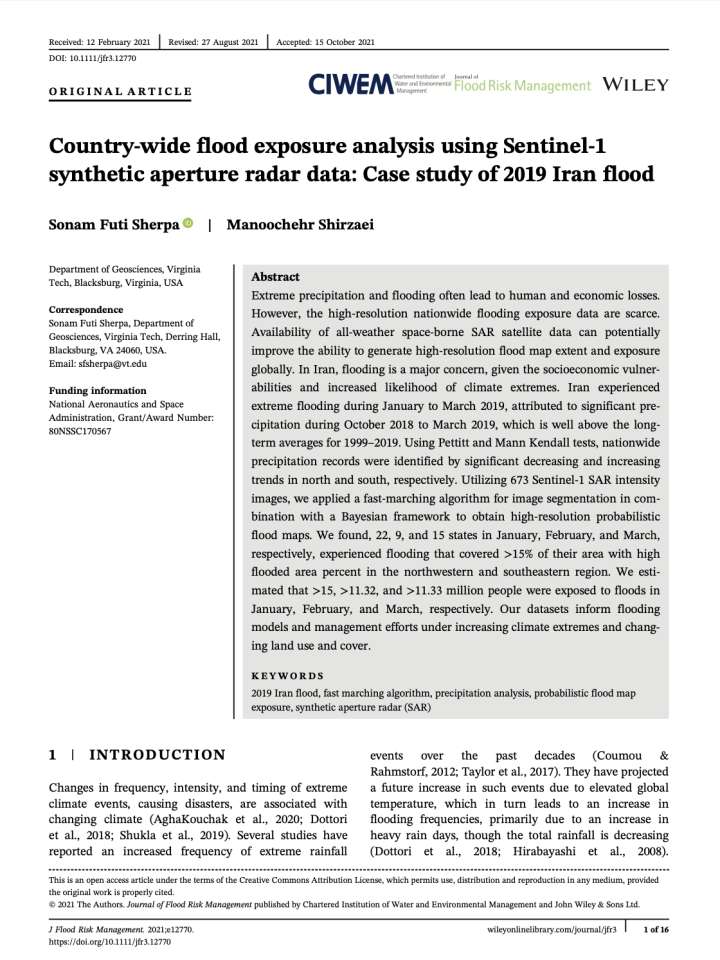Country-wide flood exposure analysis using Sentinel-1 synthetic aperture radar data: Case study of 2019 Iran flood
This paper is a country-wide flood exposure analysis of the 2019 Iran floods using Sentinel-1 synthetic aperture radar data. Extreme precipitation and flooding often lead to human and economic losses. However, the high-resolution nationwide flooding exposure data are scarce. Availability of all-weather space-borne SAR satellite data can potentially improve the ability to generate high-resolution flood map extent and exposure globally. In Iran, flooding is a major concern, given the socioeconomic vulnerabilities and increased likelihood of climate extremes. Iran experienced extreme flooding during January to March 2019, attributed to significant precipitation during October 2018 to March 2019, which is well above the long-term averages for 1999–2019. Using Pettitt and Mann Kendall tests, nationwide precipitation records were identified by significant decreasing and increasing trends in north and south, respectively. Utilizing 673 Sentinel-1 SAR intensity images, we applied a fast-marching algorithm for image segmentation in combination with a Bayesian framework to obtain high-resolution probabilistic flood maps.
The paper finds, 22, 9, and 15 states in January, February, and March, respectively, experienced flooding that covered >15% of their area with high flooded area percent in the northwestern and southeastern region. The work estimates that >15, >11.32, and >11.33 million people were exposed to floods in January, February, and March, respectively. The datasets informs flooding models and management efforts under increasing climate extremes and changing land use and cover.
Explore further
